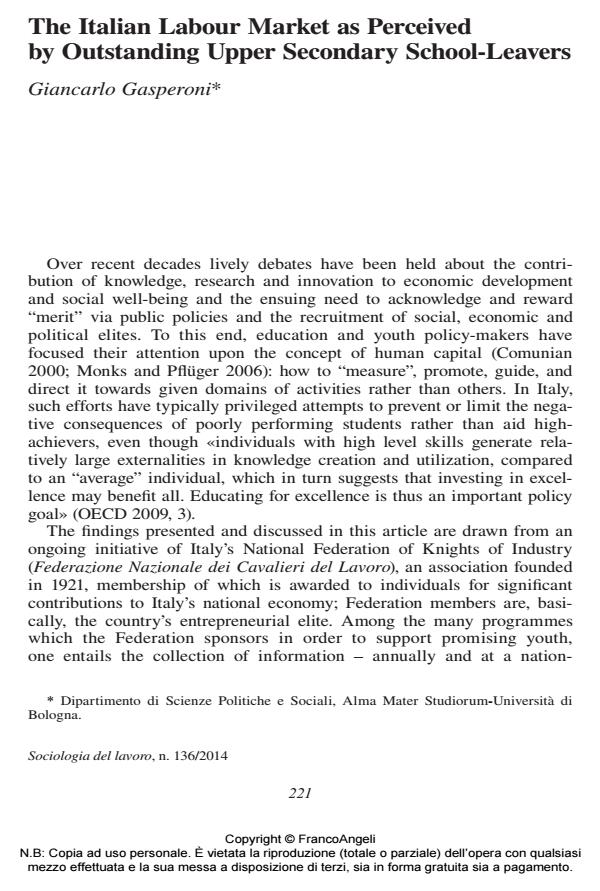The Italian Labour Market as Perceived by Outstanding Upper Secondary School-Leavers
Journal title SOCIOLOGIA DEL LAVORO
Author/s Giancarlo Gasperoni
Publishing Year 2014 Issue 2014/136
Language Italian Pages 21 P. 221-241 File size 308 KB
DOI 10.3280/SL2014-136012
DOI is like a bar code for intellectual property: to have more infomation
click here
Below, you can see the article first page
If you want to buy this article in PDF format, you can do it, following the instructions to buy download credits

FrancoAngeli is member of Publishers International Linking Association, Inc (PILA), a not-for-profit association which run the CrossRef service enabling links to and from online scholarly content.
The article reports a set of findings drawn form a larger research programme, promoted by Italy’s National Federation of Knights of Labour, aiming to supply a profile of social characteristics and the tertiary education choices of particularly gifted students, who are contacted one year after having earned their upper secondary school diplomas. More specifically, results reported here concern the incidence of meritocracy in the determination of workers’ income and in other social contexts (including the labour market), as well as among outstanding upper secondary school-leavers’ employment expectations and their representations of the "ideal job". Findings show that numerous criteria are deemed acceptable for establishing fair pay; Italy is perceived as largely non-meritocratic place, especially as regards politics, public administration, and taxation, but also insofar as its labour market is concerned; the "ideal job" features stability (permanent, open-ended contracts), use and acquisition of skills, and gender parity.
Keywords: Labour market, meritocracy, outstanding students, ideal job, work pay criteria, employment aspirations
Giancarlo Gasperoni, The Italian Labour Market as Perceived by Outstanding Upper Secondary School-Leavers in "SOCIOLOGIA DEL LAVORO " 136/2014, pp 221-241, DOI: 10.3280/SL2014-136012